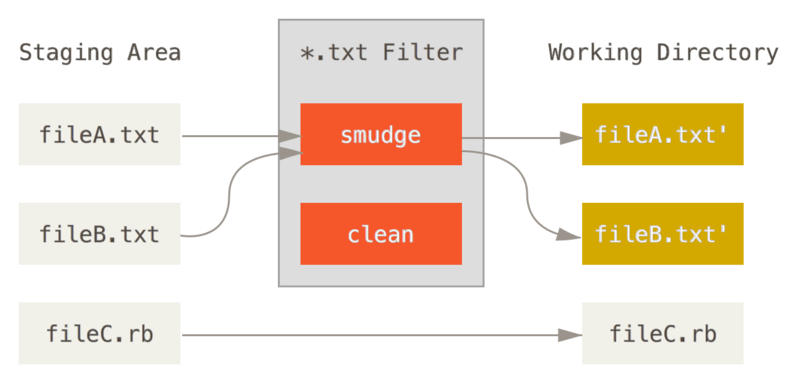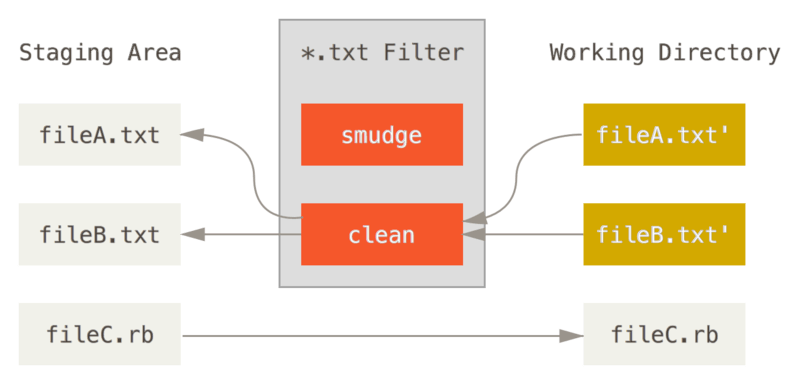Example, using git clean and smudge filters
nb: Having played with using git clean and smudge, to protect secrets, I wouldn't recommend it, it's too easy to get it wrong...
My preferred approach would be to use Mozilla SOPS with one of the providers, AWS, GCP, Azure, etc.
Either way, it may be useful for other non-secret related use cases.
When going from staging to working directory, the clean and smudge filters would be activated against the files mentioned in the filter (view the filter, in the .gitattributes file)
e.g. In this case...
*.env filter=updateApiKeyRun the following, to add the commands
(this is using local git config, could put it in global git config, if required)
git config --local filter.updateApiKey.smudge 'sed "s/{SECURE_API_KEY}/fd716224-2881-4262-952f-7802a13ea50a/"'
git config --local filter.updateApiKey.clean 'sed "s/fd716224-2881-4262-952f-7802a13ea50a/{SECURE_API_KEY}/"'“smudge” filter is run on checkout

“clean” filter is run when files are staged
To test, create a file, e.g. x.env, with the following content
API_KEY=fd716224-2881-4262-952f-7802a13ea50aWhen the file is staged and pushed, it should look like this
API_KEY={SECURE_API_KEY}https://git-scm.com/book/en/v2/Customizing-Git-Git-Attributes#_keyword_expansion https://developers.redhat.com/articles/2022/02/02/protect-secrets-git-cleansmudge-filter
